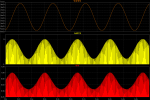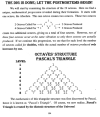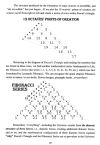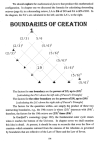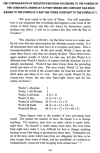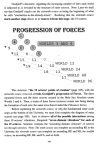Buddy
The Living Force
monotonic said:Imagine a weight suspended on a spring. That is a resonator. If you set it in motion, it eventually settles down due to its own internal resistance (friction). In a clock, the weight is the flywheel, which spins back and forth against a spring. However in a clock the motion doesn't settle normally, because the clock mechanism creates a negative resistance (anti-friction) which, added to the positive resistance (friction) of the resonator, cancels (adds) to a total resistance of zero. As long as this state is held, the resonator will be in constant, stable motion.
When the clock is starting, the resonator is given a negative total resistance, to build up the movement of the resonator. When the max vibration is reached, a second threshold is crossed. Positive resistance is then added, so that the total resistance on average cancels to exactly zero, so that the movement of the resonator is constant and stable, not growing or decaying.
Yes, like harmonic oscillators as damped and undamped systems, no? I get this from reviewing the Wikipedia entry on Oscillation:
_http://en.wikipedia.org/wiki/Oscillation
...where there is also an animated graphic of a spring-mass system that resembles how I conceive your "weight suspended on a spring."
Looking at that graphic, when the spring-mass system goes from motionless to in-motion, the starting point of it's ascension would be a "DO" on the musical scale in our octave analogy. It's an "affirming force" and it rises. When it gets to its highest point, it meets denying force, or gets denied any way to continue, so it now begins to descend back to its starting DO. Also in terms of our octave analogy, it will rise through six different points and will descend back through those points.
I believe I'm seeing an aligning of contexts here. I hope you're able to read and make sense of my posts because I think I'm seeing the correlations between your analogies and the ones made or inspired by Gurdjieff's octaves. Please let me know if You don't so I can make the connections as obvious as I can for your assessment.
For now, I'd like to make one more post related to the musical octave and just stop with that. It would be good to know at that point if you think we're on a track that's going somewhere or if you want the topic to go somewhere else.
------------
Gurdjieff says that the Law of Seven is the first fundamental law of the universe. The author of Cosmic Secrets says that the musical octave is the best way to represent this. FWIW, the Law of Seven is also referred to as the Law of Vibrations as well as the Law of Octaves.
As a musical octave, DO, RE, MI, FA, SO, LA and TI represents the Law of Seven. When G mentions this Law as a movement of forces, we need to set aside any straight-line representation and use a symbol of a line that starts at some point, continues on in a line to a point where it then angles sharply, continuing to the next point where it angles sharply again and continues until it meets back at the starting point where there there will be a total of seven "deflections."
If G were making a musical analogy of the Law of Seven, he might use the info we already covered regarding the scale of C on a piano keyboard, but we might get stuck on a model of a single straight line and probably incorrectly assume that the line of force(s) he is talking about is also linear. It's not, because he has already said in Beelzebub's Tales that the flow of forces is constantly deflecting and uniting again at its ends and that each of these deflections can also be called a "center of gravity." This is how given processes complete themselves, or how "This Law, passing through everything newly arising and everything existing, always makes its completing processes..."
Changing gears here for a minute, the Law of Three is another fundamental law of the universe and in our analogy of a musical octave, the three "things" being referred to correspond to mathematical "thirds" of a scale in question.
If you look back at my previous post, notice that in the second half of that quote, under the heading "THE TOTALITY OF 256 VIBRATIONS" there is a representation of the diatonic ratios as fractions. Notice that at FA the ratio is 1/3, at LA the ratio is 2/3 and at the ending DO or "ALL", we can think of its fractional equivalent as 3/3.
So, the points of an octave that will correspond to the Law of Three, or three forces, are FA, LA and ending DO. Eventually, we might want to try and determine what aspects of some thing we are investigating correspond to these three forces or points and how the three relate to its totality, or perhaps the outermost octave of the thing before going deeper and exploring its inner octaves. I'm not totally sure of this though, so bear with me a little longer if you think it might be worthwhile to do so.
Now, to begin to relate some of this info to some "whole phenomenon", some "totality" or a "something", we might try to put it in context with some of the things Gurdjieff has already said about Man. Man is a "something."
To begin with, we should first say that Man consists of seven centers in total: Higher Mental center, Higher Emotional Center, Intellectual center, Emotional center, Moving center, Instinctive center and Sex center. Further, he says that in his present state, Man has little or no contact with the higher mental center and higher emotional center and that the sex center was designed to activate later on in life.
In addition, Gurdjieff has depicted Man as a three-story factory; each story arising from the three primordial forces. These three forces have also been called the affirming, the denying and the neutralizing forces.
Here's a blend of a few of Gurdjieff's analogies: In Chapter Two, the author mentions that in All and Everything, Gurdjieff identifies the moving and instinctive centers (the lower story) as the denying force, the emotional center (the middle story) as the neutralizing force, and the intellectual center (the upper story) as the affirming force.
With this in mind, I think I'll pause or stop here to see what happens next.


